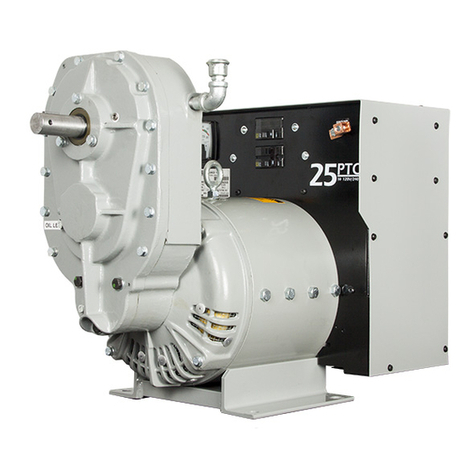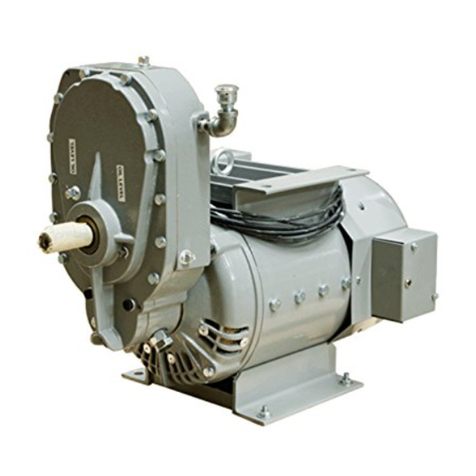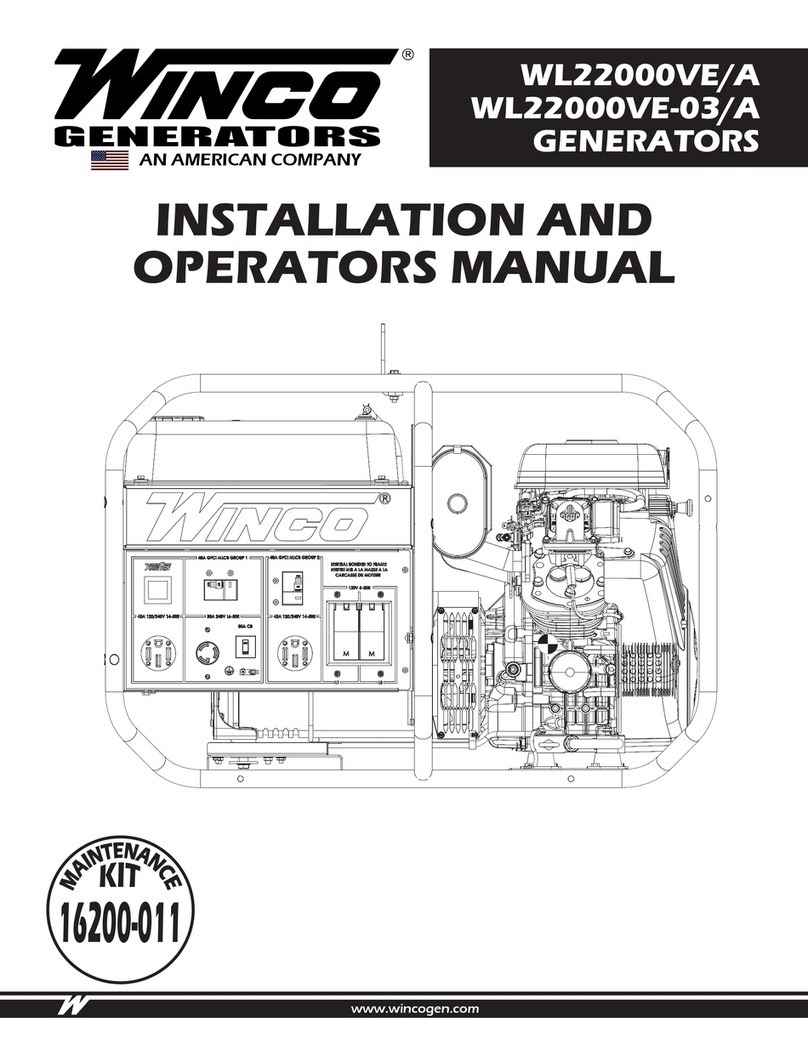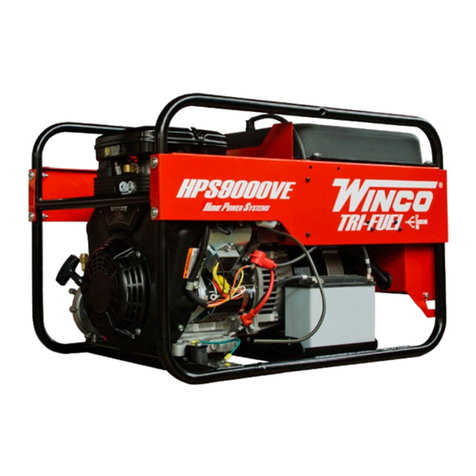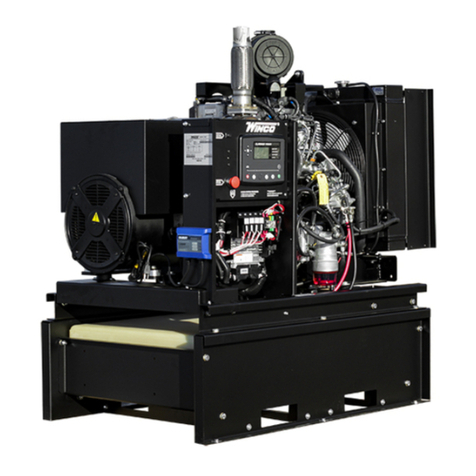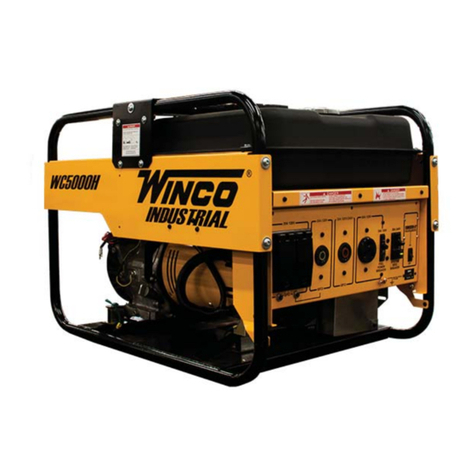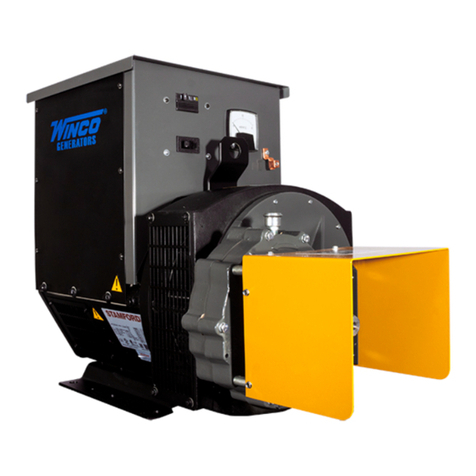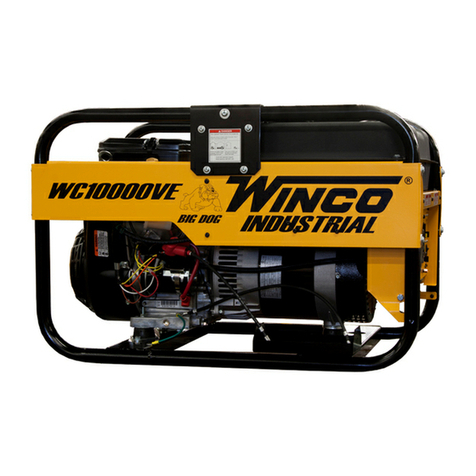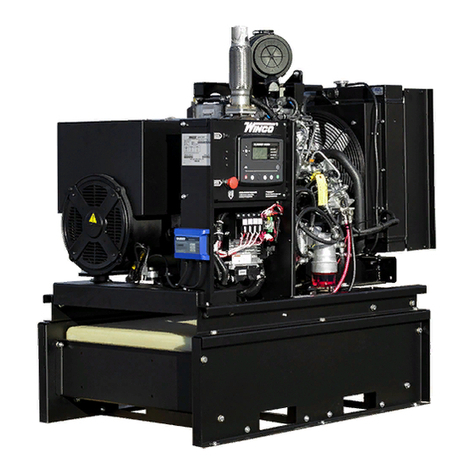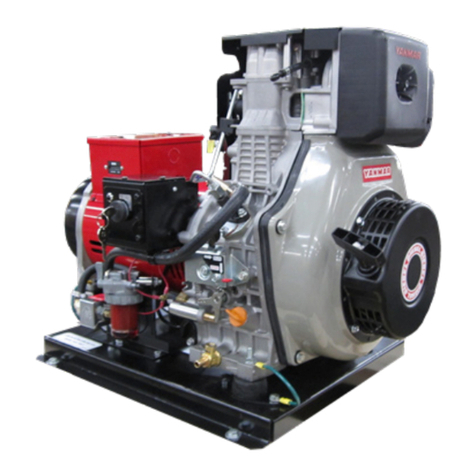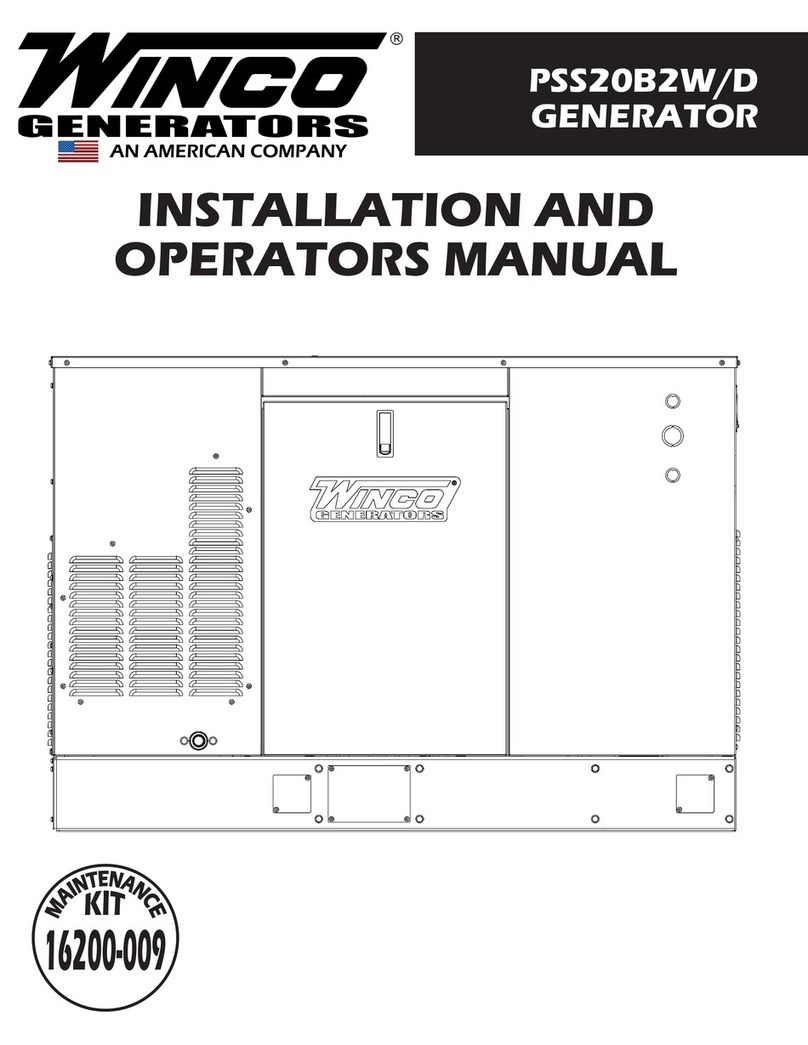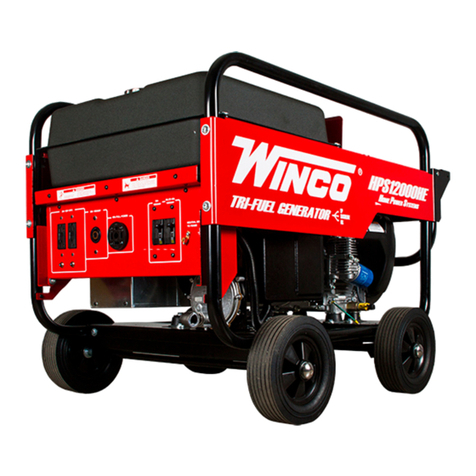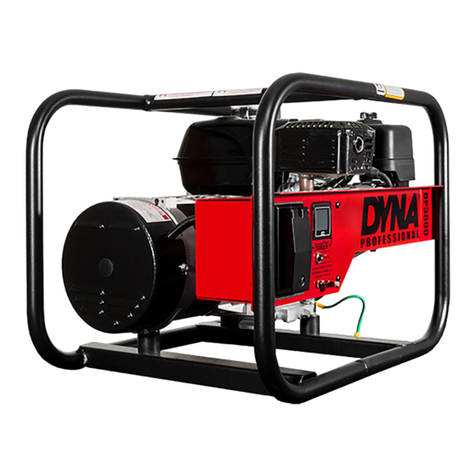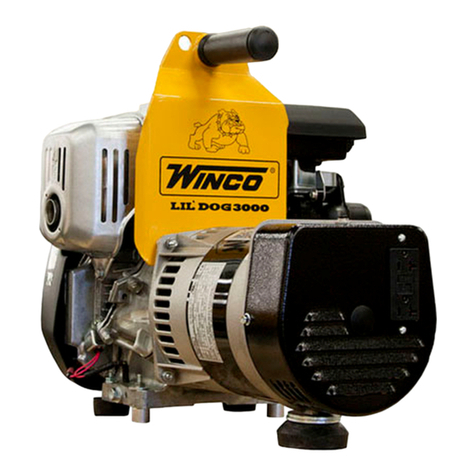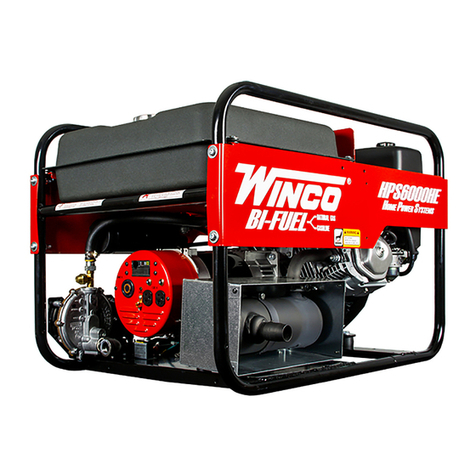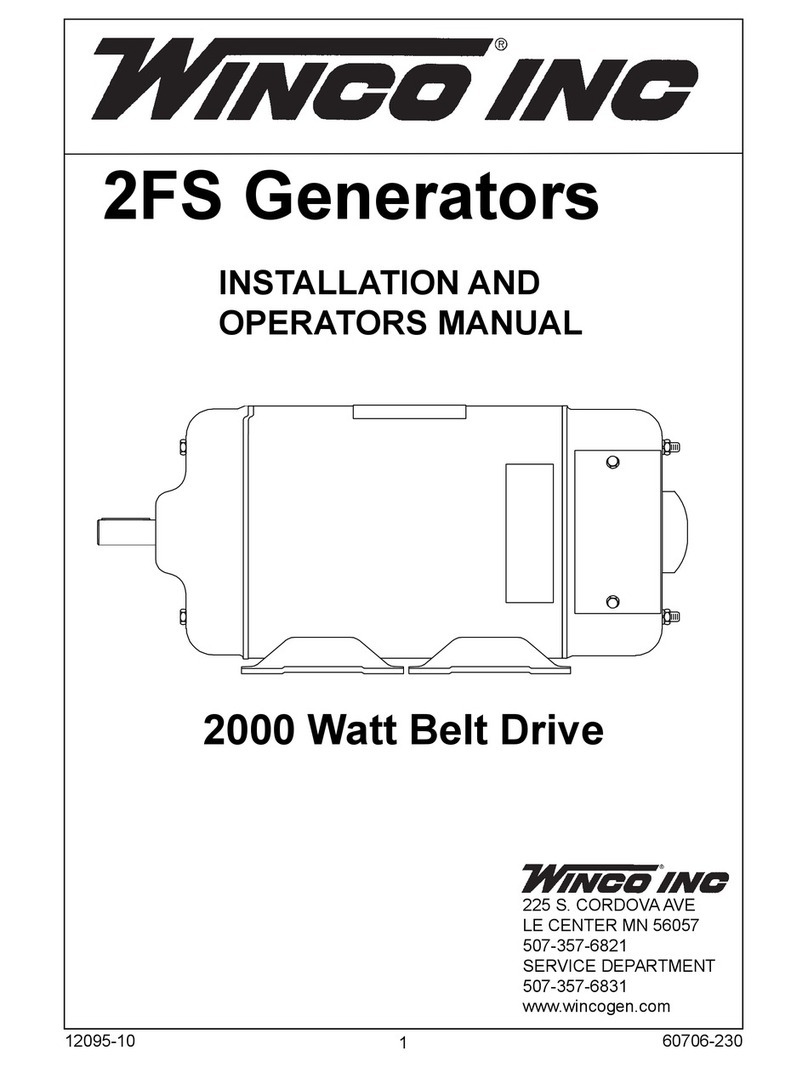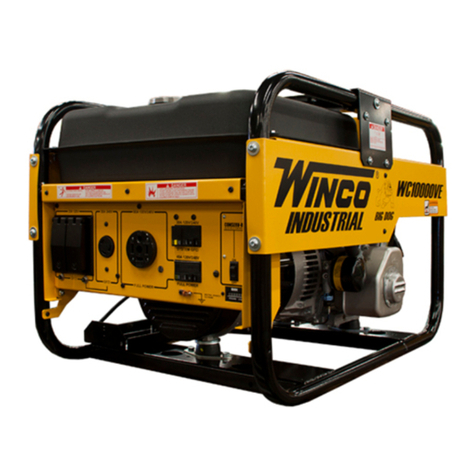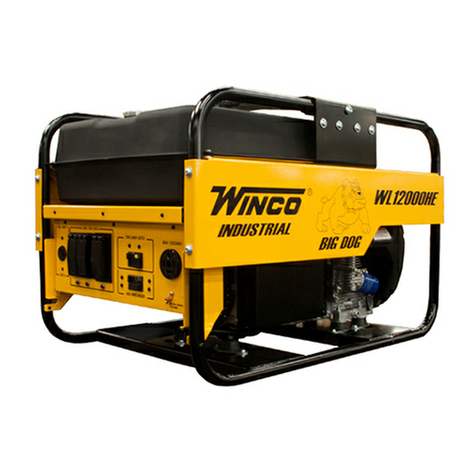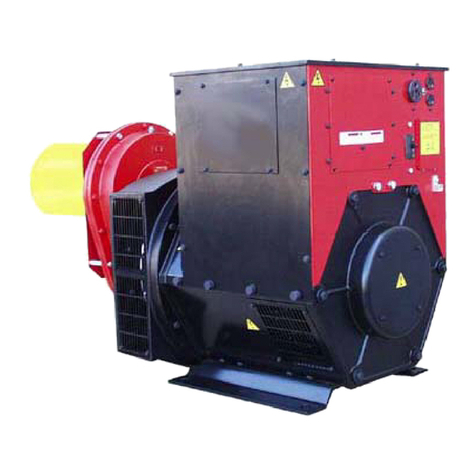
8REV B
OPM-125
These engines produce enough direct current to keep the battery
charged under normal operating conditions, but were not intended to
be used as a battery charger.
WARNING: PERSONAL INJURY:
Lead acid batteries produce explosive hydrogen gas when charging.
Keep sparks, ames, and burning cigarettes away from the battery.
Ventilate the area when charging or using the battery in an enclosed
space. Lead acid batteries contain sulfuric acid, which causes severe
burns. If acid contacts eyes, skin, or clothing, ush well with water. For
contact with the eyes, get immediate medical attention.
CAUTION:
Do NOT open or mutilate the battery. Released electrolyte is known to
be harmful to the skin and eyes and to be very toxic.
A battery presents a risk of electrical shock and high short circuit
current. The following precautions must be observed when working
with batteries:
1. Remove watches, rings and other metal objects.
2. Use tools with insulated handles.
3. Check both the battery cable ends and the battery posts to be
sure they are free of corrosion.
4. Always connect the battery positive rst and then connect the
battery negative cable. When removing the battery cables from
the battery reverse the procedure, disconnect the negative cable
rst and then the positive cable.
5. Be sure all connections are tight and coat the terminals and cable
end with dialectic grease.
WARNING:
The electrolyte is diluted sulfuric acid that is harmful to the skin
and eyes. It is electrically conductive and corrosive. The following
precautions must be always be taken.
1. Always wear full eye protection and protective clothing.
2. Where electrolyte contacts skin, wash off immediately with water.
3. If electrolyte contacts the eyes, ush thoroughly and immediately
with water and seek immediate medical attention.
4. Spilled electrolyte is to be washed down with an acid neutralizing
agent. A common practice is to use a solution of one pound
of bicarbonate of soda (baking soda) to one gallon of water.
The bicarbonate of soda solution is to be added until the evidence
of reaction, foaming, has ceased. The resulting liquid is to be
ushed water and the area dried.
DANGER: EXPLOSIVE FIRE RISK
Never smoke when near batteries. Do not cause a ame or spark in the
battery area. Always discharge static electricity from your body before
touching batteries by rst touching a ground metal surface.
SERVICING BATTERIES
Batteries used on these units may over time lose water. This is
especially true if you are using a trickle charger to maintain your
battery. When relling the battery with water use only distilled water.
Tap water will shorten the service life of the battery.
DIESEL FUEL
Always use a good grade of # 2 diesel fuel. For cold weather, blended
#1 fuel may be used. Fuel cetane number should be 45 or higher
and the fuel MUST be low sulfur or ultra low sulfur fuel. See engine
operators manual for additional fuel recommendations including Bio-
Diesel fuel. Never use gasoline or gasohol. Always ensure that the fuel
is clean and free of all impurities. Always be sure to keep the strainer in
place when lling the fuel tank.
WARNING: FIRE DANGER
Diesel fuel is ammable and can be ignited, causing or enlarging res
when proper precautions are not taken.
Never use fuel that has been stored for an extended period of time.
Fuel will lose its volatile properties and you will be left with a ‘gum’ or
varnish residue. This varnish-like substance will clog the lters, fuel
lines, and injectors. Old, contaminated, stale fuel will not burn properly.
The use of a fuel additive, such as Sta-Bil, or an equivalent will
minimize the formation of fuel gum deposits. If a unit has been out of
operation for an extended period of time, it is best to drain old fuel from
the engine and replace with fresh fuel before attempting to start.
BATTERY INSTALLATION
You will need to connect this unit to a battery to operate it. Cables
have not been provided as length are going to vary depending on
your installation. These engines are all negative ground. The positive
battery cable must be connected to the open large terminal on the
start solenoid (This terminal may have a small 16 GA. wire on it for
the charging circuit). The negative cable should be attached to a good
ground on the engine. This is usually one of the engine mounts.
Start Solenoid terminals
A twelve volt battery, rated at 300 CCA or larger is recommended for
this electric start generator set. Follow the battery manufacturer’s
recommendations for servicing and charging prior to use.
CAUTION: EQUIPMENT DAMAGE:
These electric start engines are NEGATIVE GROUND. Use extreme
caution when connecting the battery. Connect the NEGATIVE battery
terminal to GROUND.
For your safety, always connect the positive battery cable to the “bat+”
terminal rst. Then connect the negative battery cable to the “Bat-”
terminal. Make sure all connections are clean an tight. Reverse the
sequence when disconnecting, disconnect the negative cable rst.
